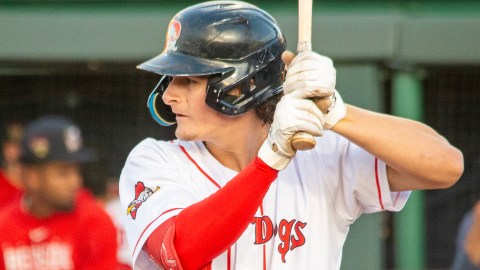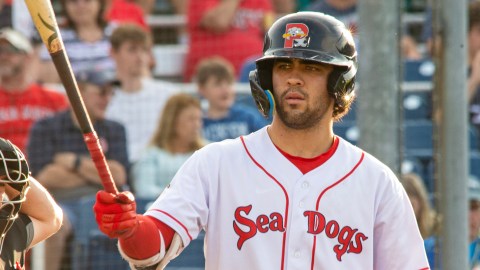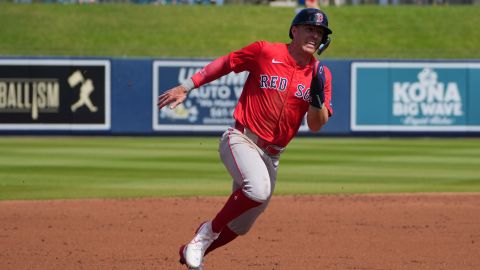After a three-day span that saw over 1,500 players selected, the MLB draft finally came to a conclusion on Wednesday. Although no team's draft can be fully judged until several years after its completion, it's never too early to speculate on which organizations look to have improved themselves the most through their scouting and drafting abilities.
The vast majority of impact prospects are taken in the first or second day of the draft. Which teams rolled the dice and look poised to open their checkbooks? Who played it safe and stuck to the college crowd?
Below are four teams that look to have benefited greatly from the 2011 draft, as well as four organizations that may suffer down the road.
Four Big Winners
1. Tampa Bay Rays
The Rays would have had to mess up pretty royally not to make this list, as they had 10 of the draft's first 60 picks. Although they didn't draft quite as much upside as they could have, their first two picks –- prep right-hander Taylor Guerrieri and LSU outfielder Mikie Mahtook –- were both projected to go much higher in the first round. Guerrieri is a long-term project but has top-of-the-rotation potential, and Mahtook is a Shane Victorino-type player who should be MLB ready within two years.
Tampa Bay also added a few high-probability players — such as prep shortstop Brandon Harris and Vanderbilt southpaw Grayson Garvin — and some upside picks like third baseman Tyler Goedell and prep lefty Blake Snell. This diverse group will help them retain one of the best minor league systems in baseball.
2. Washington Nationals
The Nationals grabbed a ton of big names in the draft's first two rounds, and look to be big spenders for the third straight year. The Mariners shocked the world by passing on Rice third baseman Anthony Rendon with the second overall pick, but their loss was the Nats' gain, as they grabbed the best college hitter in the draft with the sixth selection. The Nationals then took a high-risk, high-reward pitcher in Alex Meyer later in the first round before grabbing toolsy centerfielder Brian Goodwin with pick 43. If that weren't enough, Washington selected TCU lefty Matt Purke –- who many considered to be on par with first overall pick Gerrit Cole before the season began –- in the third round.
After the 2011 draft class joins an organization that already has Bryce Harper, Derek Norris and A.J. Cole, the Nationals system may contain the greatest number of high-upside players in baseball.
3. Boston Red Sox
Whereas in 2010 the Red Sox used their bevy of first-day selections to mix upside and probability, they took a much more aggressive approach in 2011. UConn right-hander Matt Barnes, a borderline Top 10 talent, fell to the Red Sox at 19. He has top-of-the-rotation potential. With the 26th pick, the Sox then selected prep catcher Blake Swihart, widely regarded as the best offensive backstop in the draft. Swihart is committed to Texas and will be a tough sign, but is a potential impact bat.
Boston rounded out the first day by taking a projectable high school lefty in Henry Owens, and South Carolina outfielder Jackie Bradley Jr., whose draft stock fell due to injuries. Cal State righty Noe Ramirez was a solid if not sexy pick in the fourth round as well. If the Red Sox can manage to sign Swihart and Owens, they'll go a long way towards restocking a system depleted by the offseason trade for Adrian Gonzalez.
4. Arizona Diamondbacks
The Diamondbacks rank here because of the extraordinary pitching talent they landed, snagging right-handers Trevor Bauer and Archie Bradley in the first round, lefty Andrew Chafin in the supplemental first, and righty Anthony Meo in the second. Bauer and Bradley both project as No. 1 starters, and Chafin and Meo can either be stretched out as starters or moved quickly to the majors as impact relievers.
D-Backs fans can now dream of a late 2013 rotation featuring Jarrod Parker, Tyler Skaggs, Dan Hudson and Ian Kennedy, with Bradley waiting in the wings. In the generally soft NL West, that type of talent could win them several division titles.
Four Disappointments
1. Detroit Tigers
The Tigers didn't get to pick until the second round thanks to signing Type-A free agent Victor Martinez in the off-season, but many thought they would compensate as they usually do: by taking good players with high price tags later in the draft, as they did with Nick Castellanos in 2010. Such was not the case this year, however, as the Tigers took Arkansas catcher James McCann, Vanderbilt first baseman Aaron Westlake and Kansas State third baseman Jason King with their first three picks. None of these players has any star potential, and McCann and King are likely headed to careers as MLB backups.
Martinez is a very good player, but this looks to be a brutal draft for an already unimpressive system. In a division with the up-and-coming Indians and Royals and the big-market White Sox and Twins, this could hurt them in a few years.
2. Los Angeles Dodgers
The Dodgers' draft was all about signability, and thanks to their current financial situation, they were forced to sign relatively low-upside players who won't demand big bonuses. The Dodgers reached a little for Chris Reed in the first –- many considered him a second round or supplemental first round talent –- and there’s a chance he ends up in the bullpen in the majors. They took prep third baseman Alex Santana –- son of former major leaguer Rafael Santana — in the second round, but he should be easy to sign away from Florida Atlantic University. After Santana, the Dodgers took a fairly unimpressive mix of college hitters and pitchers, sprinkling in only the occasional prep player.
Their system is already growing weaker, thanks both to promotions to players such as Dee Gordon and Rubby De La Rosa and the faltering of former top prospects such as Ethan Martin and Chris Withrow. Unfortunately for Dodgers fans, this draft doesn't look like it will help much.
3. New York Yankees
Signing Rafael Soriano and Pedro Feliciano this offseason is hurting the Yankees in more than one way, as not only are both pitchers currently on the disabled list, but they cost the team their first and second draft picks as well. The Yankees ended up with the 51st pick thanks to losing Javier Vazquez, and used it to select Dante Bichette Jr., a high school third baseman whose professional future lies in left field. Their second pick, Texas lefty Sam Stafford, is likely headed for a career as a reliever. Their fourth pick, high school third baseman Matthew Duran, has yet to face decent competition.
The Yankees did well to land New Hampshire prep righty Jordan Cote, and catcher Greg Bird will be a good get if he doesn’t go to Arkansas. But overall, there isn't much upside in this class, and the Yankees have failed to land a marquee talent for the second consecutive draft.
4. Atlanta Braves
The Braves opted to go for probability in this draft –- all of their first 10 picks were college players –- and while they likely landed a few future MLB players, they're short on big-time talent. Vanderbilt southpaw Sean Gilmartin, the club's first-round pick, should get to the majors quickly and will be an easy sign, but he doesn't figure to be more than a No. 4 starter. Second-rounder Nick Ahmed, a shortstop from UConn, has the defensive tools to stick at short, but may wind up better suited to a utility role than an everyday job.
None of the Braves' other picks are particularly exciting, and many of the college arms they took during day two look more like relievers than starters. The Braves still have one of the majors' best farm systems, but it may thin out a little after this draft.



